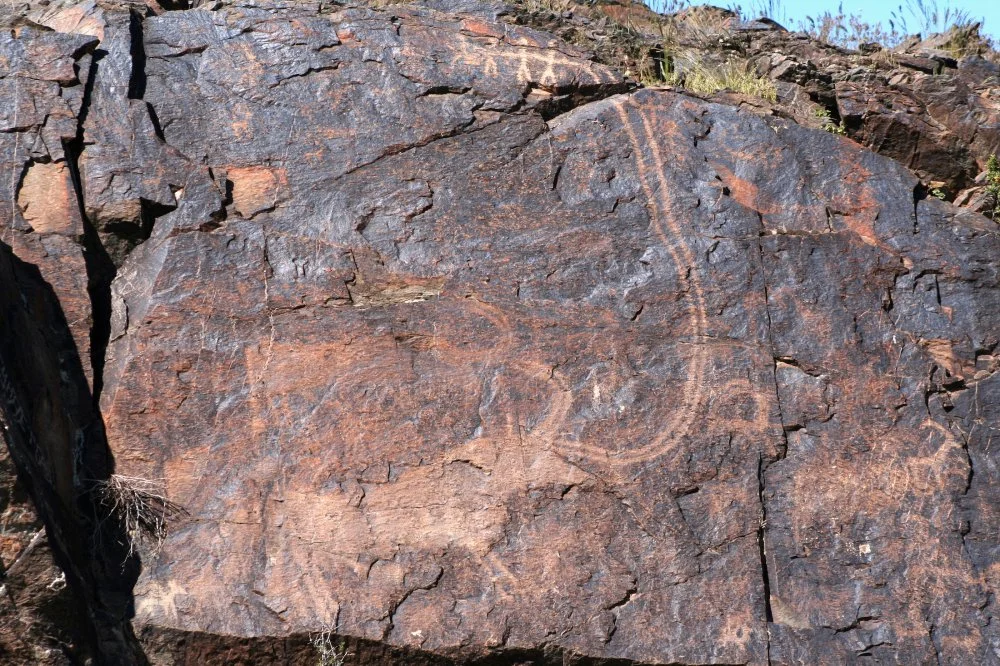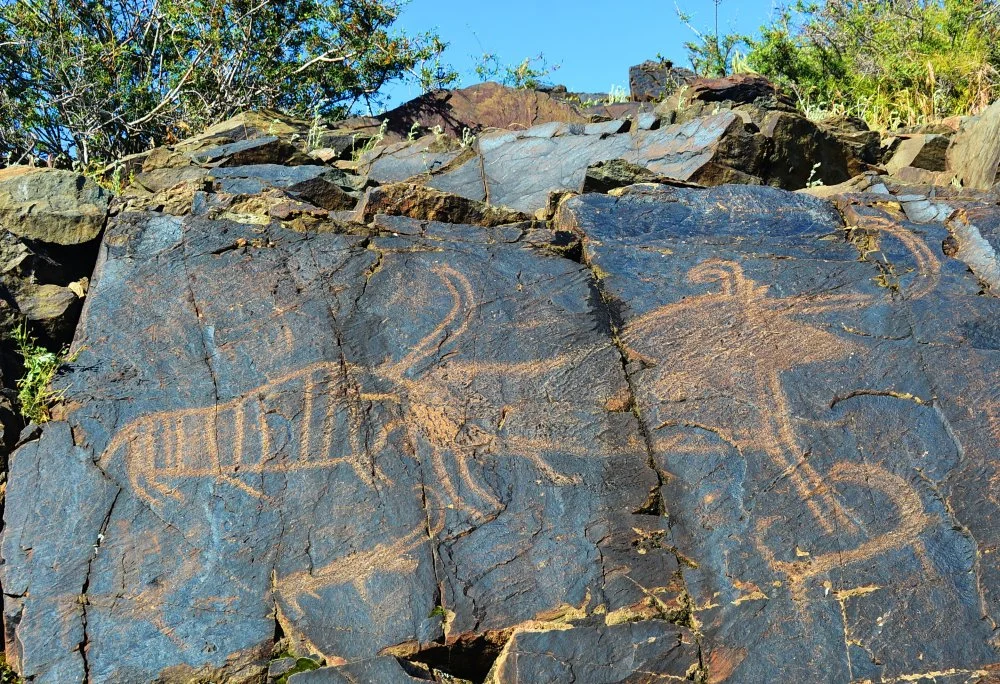This petroglyph is located in the central sanctuary of the Aqqainar Archeological Complex in the Jambyl district of the Almaty region.
Discovered during a 2008 expedition led by Alexey Maryashev, a prominent researcher at the A. Margulan Institute of Archeology, the sanctuary is adorned with cult scenes spanning the Bronze Age, early Iron Age, and Middle Ages. These include depictions of archers and numerous animals, with the most striking image being of a giant auroch with two pairs of long horns, each ending in human figurines.
Later explorations of the sanctuary revealed several more such four-horned bulls, albeit smaller in size. All of these artifacts date back to the Bronze Age (second to third millennium BCE). However, we do not know precisely which tribes inhabited the Chu-Ili mountain area, though they may have been one of the Indo-Iranian tribes.
According to historian M.E. Kilunovskaya, a view also shared by Maryashev, the four-horned aurochs represent the mythical Sarsaok, a figure found in both Zoroastrian mythology and Persian traditions. Sarsaok is said to transport the souls of the dead to other worlds on his back, crossing bodies of water. Despite his immense size, Sarsaok was said to be benevolent, yet terrifying when angered.
However, a lingering mystery surrounds the Aqqainar bulls. In mythology, Sarsaok is closely associated with the moon and water. However, researchers noted the lack of water sources near this sanctuary, with only a small spring located half a kilometer to the south. The Chu-Ili mountains are dry, especially from June to September. Yet, recent studies of the petroglyphs revealed that during the spring rains, turbulent streams flood the gorge, forming a temporary but substantial lake directly beneath the rock featuring the sacred bull.

Another group of petroglyphs from Aqqaynar/Photo: Olga Gumirova
The material culture of the people who worshiped the bull at Aqqainar remains poorly understood, with research on the discovered settlements still in its infancy. And so, Aqqainar, despite being well-known to historians in Kazakhstan, may yet reveal more surprises.

Two more Aqqainar bulls/Photo: Olga Gumirova




